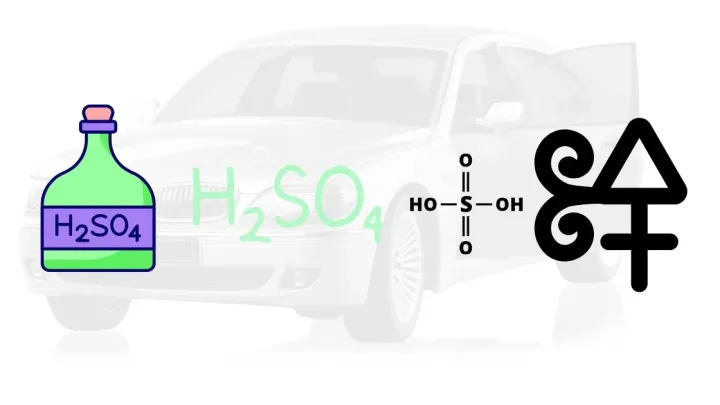
Sulphuric acid is not used on a car because it can cause severe damage to the vehicle's metal parts and paint.
This highly corrosive acid can rapidly degrade most materials found in cars, leading to significant safety hazards and costly repairs.
Understanding why sulphuric acid poses such a risk to vehicles is crucial for any car owner or automotive enthusiast.
This powerful acid, commonly found in industrial cleaners and some car batteries, is known for its ability to eat away at metals, plastics, and even rubber components.
Its corrosive nature means that even accidental spills can lead to irreversible damage, not only compromising the aesthetic appeal of your car but also its structural integrity and safety features.
Sulphuric acid's aggressive reaction with different materials makes it unsuitable for any application related to car maintenance or cleaning.
Knowing this helps car owners make informed decisions about the products they use, ensuring the longevity and reliability of their vehicles.
By steering clear of this hazardous chemical, individuals can protect their investment and maintain their car's condition over time.
The Chemistry Of Sulphuric Acid
Sulphuric acid, a highly corrosive substance, demands respect. Its ability to react with various materials makes it unsuitable for car maintenance. Understanding its properties and reactions with metals is crucial.
Properties Of Sulphuric Acid
Sulphuric acid is a colorless, oily liquid. It is soluble in water and releases heat on contact. The acid is a strong dehydrating agent and can cause severe burns.
- Chemical formula: H2SO4
- Molecular weight: 98.079 g/mol
- Boiling point: 337°C
- Density: 1.84 g/cm3
Chemical Reactions With Metals
Sulphuric acid reacts with most metals. It produces hydrogen gas and metal sulphates. These reactions can be exothermic and dangerous.
| Metal | Reaction Product | Heat Released |
|---|---|---|
| Zinc (Zn) | Zinc Sulphate (ZnSO4) | High |
| Iron (Fe) | Iron(II) Sulphate (FeSO4) | Moderate |
| Copper (Cu) | No reaction without catalyst | None |
In a car, these reactions could damage metal components. They could also release toxic gases. This is why sulphuric acid is not used in cars.
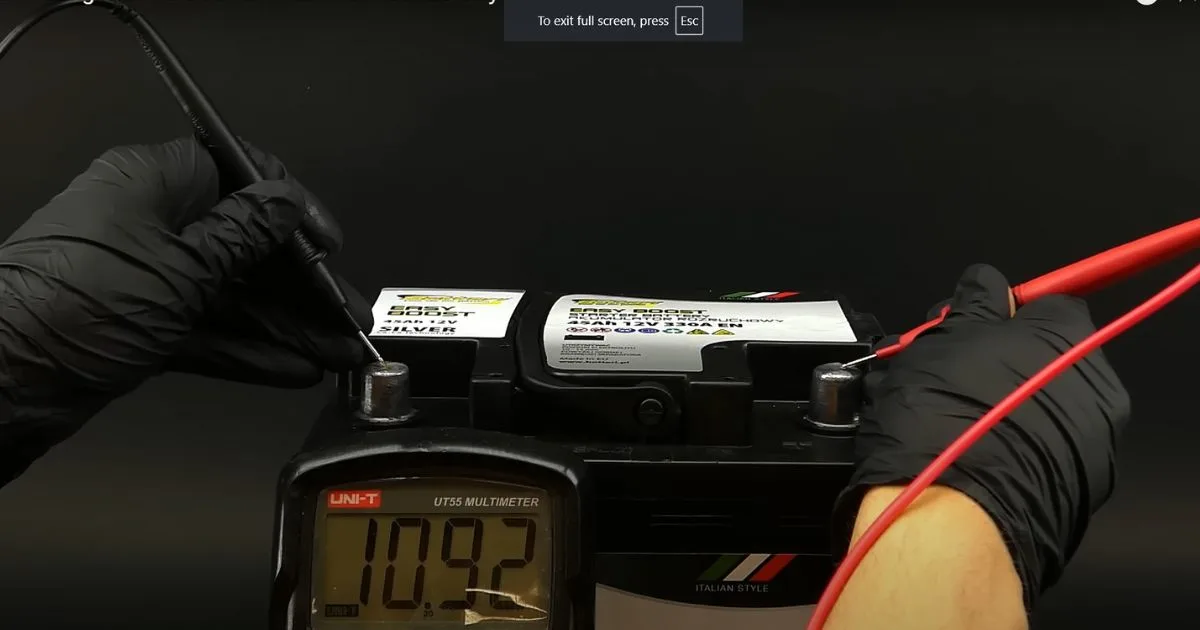 Automotive Industry: Sulphuric Acid
Automotive Industry: Sulphuric Acid
Sulphuric Acid In The Automotive Industry
Sulphuric Acid in the Automotive Industry plays a crucial role. This powerful substance finds its use in various applications.
Yet, it's not suitable for all parts of a car. Let's explore its uses and limitations.
Battery Composition And Role
Sulphuric acid is vital in car batteries. It helps start engines. The acid reacts with lead plates inside the battery.
This creates electrical energy. Cars need this energy to run.
- Lead-acid batteries contain sulphuric acid.
- It converts chemical energy into electrical energy.
- This energy starts the car's engine.
Industrial Uses Beyond Vehicles
Sulphuric acid has many uses outside cars. It is used in:
| Industry | Use |
|---|---|
| Manufacturing | Making metals and chemicals. |
| Agriculture | Fertilizer production. |
| Cleaning | Removing rust and cleaning surfaces. |
Sulphuric acid is versatile. Yet, it's too corrosive for some car parts. Using it directly on a car can damage it.
This is why it's not used on cars directly, but in batteries and industries.
Risks Of Sulphuric Acid On Car Surfaces
Sulphuric acid poses serious threats to car surfaces. It can cause significant harm.
Understanding these risks is crucial for car owners. Let's explore why this substance is a danger to vehicles.
Corrosive Effects On Paint And Metal
Sulphuric acid is highly corrosive. It can instantly damage car paint. This leaves unsightly marks and exposes metal underneath. Once exposed, the metal can rust.
- Attacks clear coat: The top protective layer peels off.
- Dissolves paint: Color and shine are lost quickly.
- Sparks rust: Bare metal corrodes without protection.
Long-term Damage To Car Components
Components suffer when exposed to sulphuric acid. This can lead to costly repairs.
Here's how acid affects different parts:
| Component | Effect of Sulphuric Acid |
|---|---|
| Gaskets | Eats away, causing leaks. |
| Wiring | Insulation strips, leading to shorts. |
| Engine parts | Corrodes, impairs performance. |
Prevention is better than cure with acid damage. Regular maintenance keeps cars safe. Always use appropriate cleaning agents.
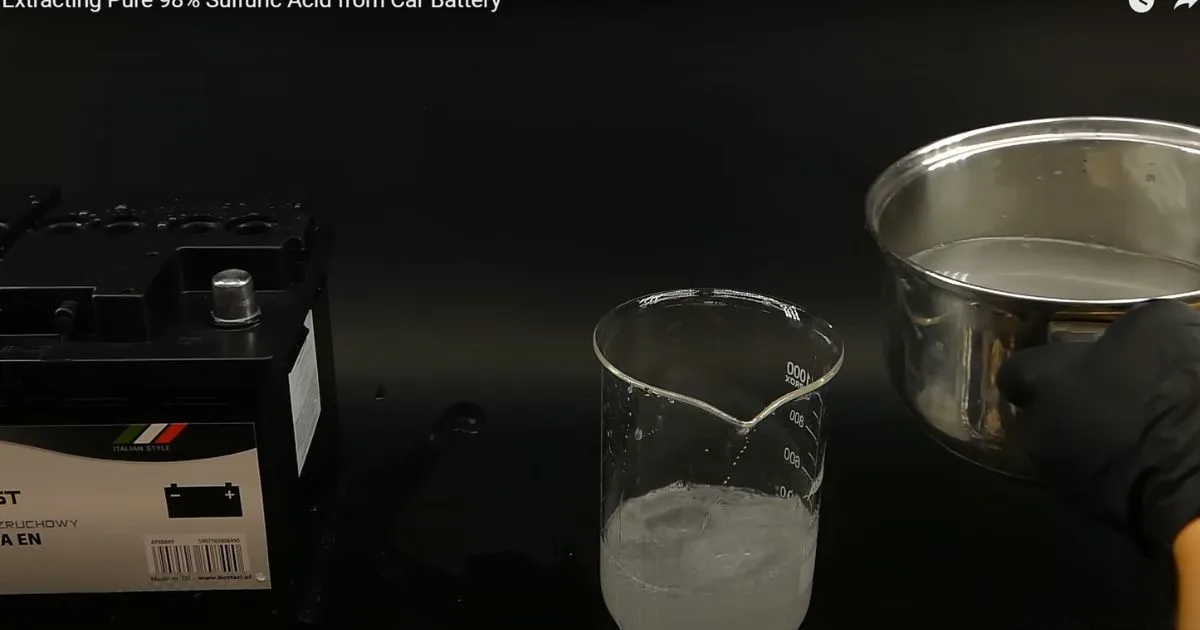 Sulphuric Acid Exposure
Sulphuric Acid Exposure
Health Hazards Of Sulphuric Acid Exposure
Sulphuric acid poses significant health risks. Understanding these risks is crucial for safety.
Skin And Eye Irritation
Sulphuric acid can cause severe skin burns. Contact with eyes may result in permanent damage.
Immediate washing with water is necessary upon exposure. Protective clothing and eyewear are essential for handling.
Inhalation Risks And Precautions
Inhaling sulphuric acid mist can harm the respiratory system. It can lead to difficulty breathing and coughing.
Well-ventilated areas and the use of masks protect against inhalation. Emergency plans must be in place for accidental exposure.
Environmental Concerns
Sulphuric acid poses significant environmental risks. Unintended release from vehicles can lead to serious ecological harm.
This section explores the impact of sulphuric acid on the environment.
Acid Rain Formation
Sulphuric acid contributes to acid rain. When released into the atmosphere, it combines with water vapor. This mixture falls as acid rain.
Acid rain affects plants, animals, and buildings. It can also alter the pH balance of water bodies, affecting aquatic life.
Soil And Water Contamination
Leaks of sulphuric acid can contaminate soil and water.
The acid can seep into groundwater, making it unsafe. Contaminated soil affects plant growth and can enter the food chain.
This can cause health issues for animals and humans alike.
- Acid affects soil chemistry
- Plant and animal life suffer
- Water sources become toxic
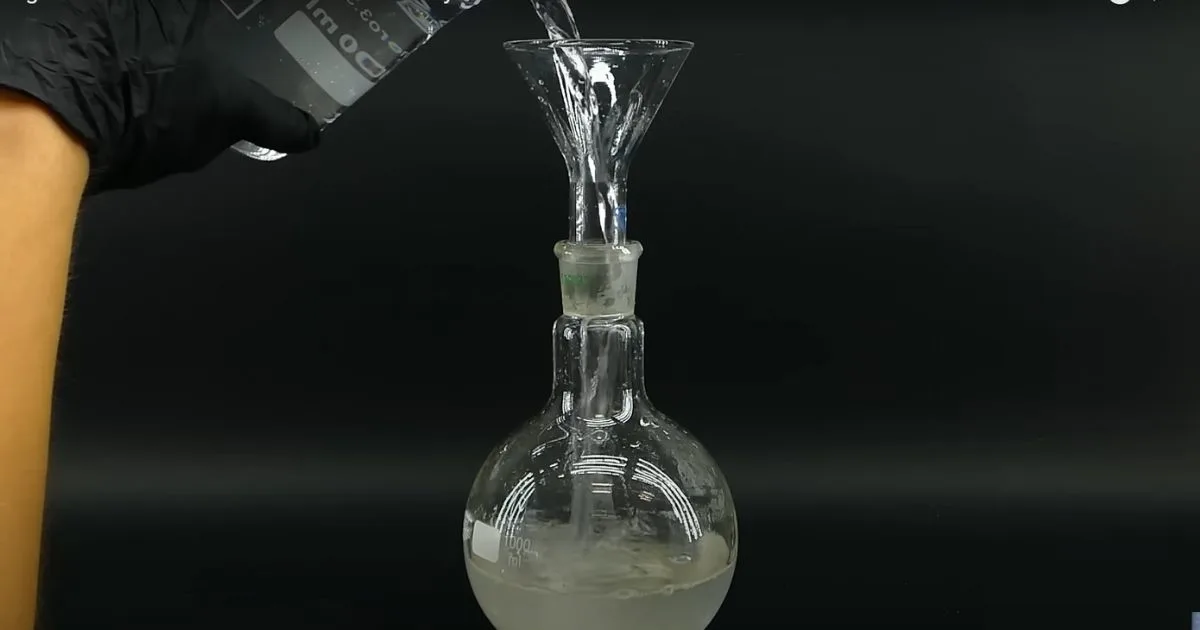 Handling And Disposal
Handling And Disposal
Safe Handling And Disposal
Sulphuric acid demands respect. This powerful substance can damage cars and harm people.
It's crucial to understand safe handling and disposal. We want to prevent accidents and protect the environment.
Personal Protective Equipment
Safety comes first. Always wear personal protective equipment (PPE). This gear includes:
- Goggles: Protects eyes from splashes.
- Gloves: Acid-resistant gloves guard hands.
- Apron: Wears to shield body from spills.
- Boots: Uses acid-resistant boots for feet.
- Respirator: Needed when ventilation is poor.
Disposal Protocols For Acid Waste
Disposing of sulphuric acid requires care. Follow these steps:
- Check local regulations for acid disposal.
- Never pour acid into the environment.
- Use neutralization methods before disposal.
- Store in appropriate containers for transport.
- Contact authorized disposal facilities.
Remember, safety and environmental care are crucial. Handle with caution.
Alternatives To Sulphuric Acid For Cleaning
Exploring Alternatives to Sulphuric Acid for Cleaning reveals safer options. Sulphuric acid poses risks. It can damage car parts and harm skin.
Thankfully, other cleaners work well without these dangers. Let's look at some.
Milder Acidic Solutions
Milder acids can clean effectively with less risk. These include:
- Vinegar (Acetic Acid) - Great for removing rust and buildup.
- Lemon juice - Works well on light stains and grease.
- Citric Acid - Found in citrus fruits, it cleans without harming surfaces.
These options are safer for both the car and the user.
Non-acidic Cleaning Agents
Non-acidic cleaners also offer effective cleaning. Consider these:
- Baking Soda - Mix with water for a gentle scrub.
- Soap and Water - Sometimes, the simplest solution is best.
- Isopropyl Alcohol - Good for removing sticky substances.
These alternatives protect the car's finish and are user-friendly.
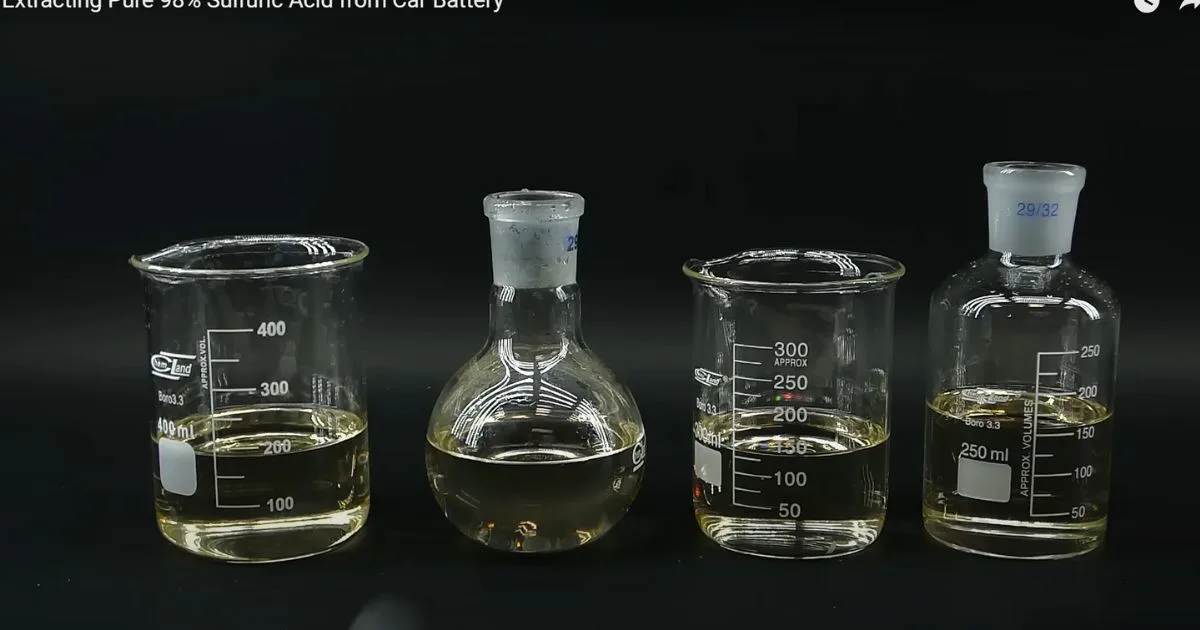 Emergency Response To Sulphuric Acid Spills
Emergency Response To Sulphuric Acid Spills
<!-- wp:heading {"level":2} -->
Emergency Response To Sulphuric Acid Spills</h2>
Dealing with sulphuric acid spills requires quick and precise action.
This section offers guidance on emergency responses to ensure safety and prevent damage.
First Aid Measures
Immediate care is crucial for acid exposure. Follow these steps:
- Rinse skin with water for 15 minutes. Remove contaminated clothing.
- Seek medical help for eye or ingestion incidents.
- Use baking soda on small skin spills. Rinse again.
Containment And Neutralization Procedures
Stop the spread and neutralize the acid safely. Employ these methods:
- Evacuate the area. Use personal protective equipment (PPE).
- Contain spill with sand or earth.
- Apply sodium bicarbonate or lime to neutralize.
- Collect residue for proper disposal.
Remember, safety comes first. Act responsibly.
Related Post
Does Replacing Car Battery Boost Your Ride’s Agility?
Clean Car Battery Plates: Quick & Easy Tips</b>
Install a Car Battery Holder: Quick & Secure Guide</b>
How Do You Know If Your Car Alternator is Bad? Spot Signs Now!
Connect Car Battery Box to Main Battery: Easy Guide</b>
Conclusion
Wrapping up, it's clear that sulfuric acid poses severe risks to vehicles.
Its corrosive nature can lead to irreversible damage, safety hazards, and hefty repair costs. Instead, opt for products designed for automotive care.
Remember, keeping your car in top shape doesn't involve harsh chemicals, but smart choices.
Disclosure
Some links may be affiliate links. That means we may earn a small commission at no extra cost to you.